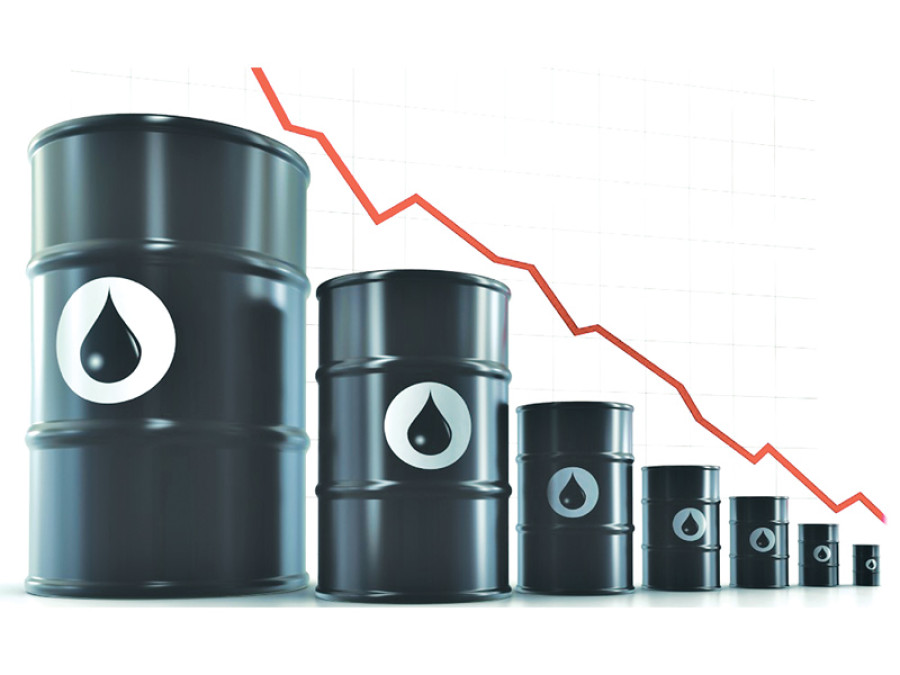Opinion
Oil slump
While the world rejoices the plunge in oil prices, the reality for Nepal is entirely different
Bibek Raj Kandel
The drop in the global price of crude oil, below $30, has stunned industries and consumers alike. Obviously, the fall in the oil prices is good news for oil importing countries. Indian Prime Minister Narendra Modi seems all set to capitalise on this. Last week Modi discussed the prospects of boosting investment in oil and gas with Shell and International Energy Agency executives for his ‘Make in India’ campaign. He tweeted: “Had a very good interaction with global oil & gas experts. Discussions centred around India’s energy sector & investment in oil & gas.”
It is likely that the price will dip further below $25 per barrel as oil experts expect Iran and Saudi Arabia to continue to boost the supplies in coming months as a result of their ongoing conflict.
Nepal’s case
Although it is hard to predict how long the drop in the oil prices is going to last, one thing is for sure: Cheaper oil is not going to be available for long. Globally, Nepal ranks near bottom in the list of oil importers when measured against the total volume of imports. Nevertheless, the country’s imports of major petroleum products have increased at an annual rate of 12 percent in recent years—from 374,198 kilo litres in 2005 to 1,209,187 kilo litres in 2015. So, as a net importer of oil, Nepal could have tapped this golden opportunity to make some savings.
But while the world rejoices the plunge in oil prices, the reality for Nepal is entirely different. With the ongoing blockade following the protests by the Madhesi Morcha along the border, the supply of petroleum products is in disarray. Failing to forge a political consensus among the political parties to address the Madhesi demands, Nepal’s fuel crisis is getting out of control. People have been forced to spend their crucial working hours, in some cases even days, queuing up at the petrol pumps for a few litres of petrol. As a result, black marketeering of petroleum products has been thriving in the country. With the price of a litre of petrol three times than the regular price, black marketeers are extorting the public. The illegal market is also gnawing away at the revenue stream.
But energy crisis in Nepal is not a new phenomenon. Regular power cuts from the state-operated Nepal Electricity Authority in the country have become a routine for over a decade now. The power cuts have recently gone up to 15 hours a day. Those who were already operating their businesses and industries relying on diesel operated systems, as a coping mechanism at the expense of high operation costs, are now suffering further with the disruption in fuel supplies. The government does not seem to have taken any concrete measures to abate the fuel crisis. But it is time to act and the government, along with all the political parties, should actually be paying heed to the falling oil prices and have discussions on how Nepal can benefit from it.
Alternate sources
Amidst the fuel crisis, the government led by Prime Minister KP Oli has been obliged to seek every possible alternative. The good news is that the government has accorded high priority to the renewable energy sector and is planning to scale it up. But the danger lies in the very assumption that renewables can immediately lessen the burden on the import of fuel. Our circumstances are such that even to transport a small micro-hydro turbine to a village, we need the imported fuel. The construction of major hydropower projects has been halted thanks to the blockade. Moreover, industries and enterprises are also cutting down their operations due to the lack of oil supplies.
There seems to be a strong market demand for solar power and other forms of alternative energy in the country. We have both the market and companies willing to provide their services. But the renewables, if driven by any short-term solutions and bad economics, can risk the growth of renewable energy in the long run.
What is more imperative at this stage is strategic reform and more investment in the renewable energy sector so that any investment made today could ensure its sustained growth. At present, the government could use the savings from falling oil prices in the global market to cross-subsidise the renewable energy sector. Also, it is necessary for the government to take immediate steps to improve the fuel situation, scale up its storage capacity of oil depots and undertake measures to reform oil subsidies. Oil subsidies have long been justified for their role in spurring the overall development of the economy. If that is also expected from renewables in Nepal, existing petroleum prices need to be adjusted with some top ups with renewable energy surcharge and by adjusting Power Purchase Agreement tariffs for renewables.
In his book, ‘The Quest: Energy Security the Remaking of the Modern World’, the oil guru Daniel Yergin recalls American president Jimmy Carter declaring “no one can ever embargo the sun” during the only press conference ever held on the top of the White House advocating solar water heaters on June 20, 1979. The very idea of transitioning to renewable energy unfolds its prospects as a key investment to ensure the long term energy supplies in the context of complex geopolitics and rising issues of energy security in Nepal. However, all this largely depends on the government’s ability to bring Madhesi Morcha and other political parties on board, smooth the supplies, store and stock them well and use the savings later to invest in technologies, which in the long run can lessen our dependency on oil.
Kandel is a national advisor at Alternative Energy Promotion Centre




 10.12°C Kathmandu
10.12°C Kathmandu










